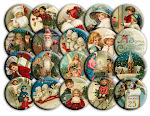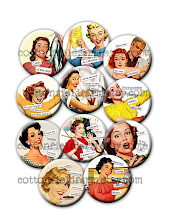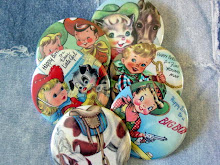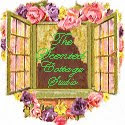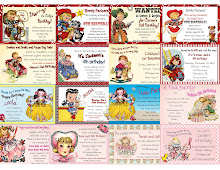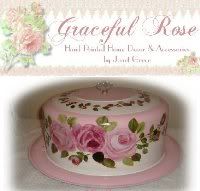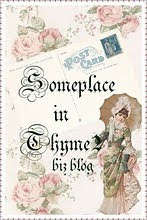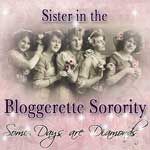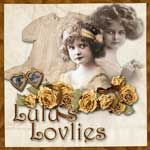Then Sings My Soul, Special Edition, by Robert J. Morgan is a book containing 150 Christian hymns and the stories behind the hymns. It is set up in sections including, Christmas, Easter, Thanksgiving, Patriotic, and Other Favorites. Each hymn is printed with words and music on the left-hand pages, and the corresponding stories and histories on the facing right-hand pages. The book has three indexes, one with the hymns listed by title; one listed by author; and one listed by the first line of the hymn, all making it easy to find a certain song or story.
The physical structure of the book is quite unique. It is a “paper-back,” but has the feel of a nice classic. It has flaps in the front and back of the book, and the page edges have been rough-cut, giving an antique feel to the book. Overall, it is a very beautiful book, and would make a nice gift.
This book is great for short reads and references. This is the one you would take to the doctor’s office or any place you have a wait time. It is easy to pick up, read a few pages, and put down again until next time. It would make a very nice gift for a church song leader or anyone who likes hymns and history.
It was interesting to learn the different stories of faith and hardships that inspired many of the hymns. I learned that Silent Night was hurriedly written one Christmas Eve because a church organ was broken. The song was written to be sung without an organ, thus saving the 1818 Christmas Eve service at the Church of St. Nicholas in Oberndorf.
The Little Brown Church in the Vale was written not about an existing church, but about a grove of trees along sloping hills flowing down to a river in the valley. This is the scene William Pitts saw in 1857 when his stage coach made a stop in Bradford, Iowa. He couldn’t forget the peaceful picture, so he wrote a song about a little brown Church in the vale. He then filed it away with his papers. Later, he returned to Bradford and found that the Christians in the area had built a little brown church in the exact spot he had envisioned it in his song. Since the War Between the States was raging, and supplies were hard to come by, the members had painted the little church the cheapest color they could find, which happened to be brown. The church was dedicated in 1864, and Pitts sang his song in “the church in the valley by the wildwood.”
I enjoyed reading this book, and I will return to it for information and inspiration again and again. I received this book free from BookSneeze and agreed to write a review. I was not required to write a positive review. This review is my own personal opinion. I have written short reviews on my blog of several of the hymns found in this book.
skip to main |
skip to sidebar
Facebook Badge
Items from my Etsy Shop!
It's Beginning to Look a Lot Like Christmas!
Buttons for Christmas Stockings, Gifts, Tags, Party Favors or for Wearing!
Vintage Milk Bottle Caps 2.25" Magnets
Search This Blog
Blog Archive
-
▼
2013
(2)
- ► 04/14 - 04/21 (1)
-
►
2012
(16)
- ► 11/18 - 11/25 (1)
- ► 11/04 - 11/11 (1)
- ► 06/17 - 06/24 (1)
- ► 06/03 - 06/10 (1)
- ► 05/27 - 06/03 (1)
- ► 05/20 - 05/27 (1)
- ► 04/22 - 04/29 (1)
- ► 04/15 - 04/22 (1)
- ► 04/08 - 04/15 (1)
- ► 03/18 - 03/25 (1)
- ► 02/12 - 02/19 (1)
- ► 01/22 - 01/29 (1)
- ► 01/15 - 01/22 (2)
- ► 01/01 - 01/08 (2)
-
►
2011
(28)
- ► 12/18 - 12/25 (1)
- ► 12/04 - 12/11 (2)
- ► 11/27 - 12/04 (1)
- ► 11/20 - 11/27 (2)
- ► 11/06 - 11/13 (3)
- ► 10/02 - 10/09 (1)
- ► 09/25 - 10/02 (1)
- ► 07/24 - 07/31 (1)
- ► 07/17 - 07/24 (1)
- ► 07/03 - 07/10 (1)
- ► 06/19 - 06/26 (1)
- ► 05/29 - 06/05 (1)
- ► 05/08 - 05/15 (1)
- ► 04/24 - 05/01 (2)
- ► 04/17 - 04/24 (1)
- ► 04/10 - 04/17 (1)
- ► 04/03 - 04/10 (2)
- ► 03/27 - 04/03 (2)
- ► 03/06 - 03/13 (1)
- ► 01/23 - 01/30 (1)
- ► 01/09 - 01/16 (1)
-
►
2010
(30)
- ► 12/26 - 01/02 (2)
- ► 12/19 - 12/26 (1)
- ► 12/12 - 12/19 (2)
- ► 11/28 - 12/05 (3)
- ► 11/21 - 11/28 (1)
- ► 11/14 - 11/21 (2)
- ► 11/07 - 11/14 (1)
- ► 10/31 - 11/07 (1)
- ► 10/24 - 10/31 (1)
- ► 10/17 - 10/24 (1)
- ► 10/10 - 10/17 (3)
- ► 09/26 - 10/03 (2)
- ► 09/19 - 09/26 (5)
- ► 09/12 - 09/19 (1)
- ► 09/05 - 09/12 (2)
- ► 08/29 - 09/05 (1)
- ► 08/15 - 08/22 (1)








